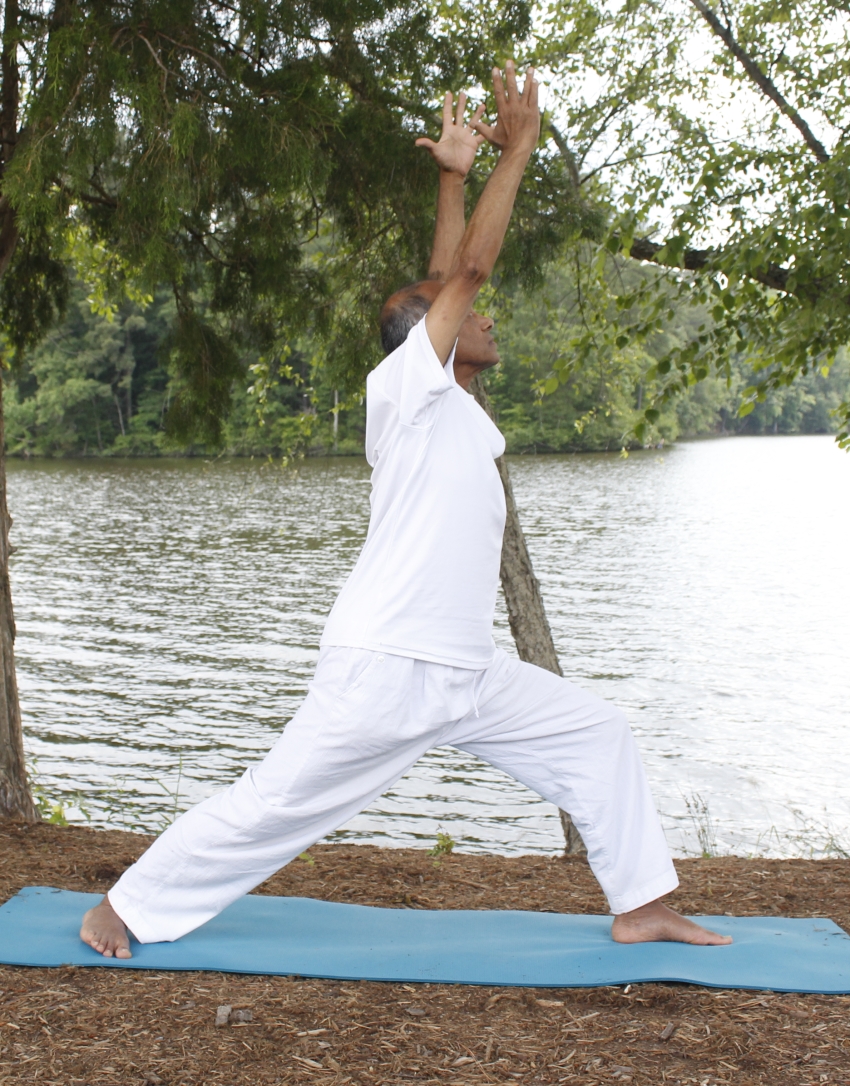Veerabhadrasana (वीरभद्रासन)
In my own practice and the classes that I teach, I integrate the practice of Warrior poses as a part of the Surya Namaskar (Sun Salutation) sequence. However, all three variations of the Warrior pose can be practiced independently as standing poses.
Hope you will enjoy practicing with my good friend Tanu in this video sequence.
Who was Veerabhadra?
Veerabhadra was a mythical warrior, created by Lord Shiva from the strand of his hair to fight against King Daksha. Shiva was married to Daksha’s daughter, Sati who had married Shiva against the wishes of her father. Daksha, in order to take revenge against Shiva, organized a grand yajna (a sacrificial ceremony) in which he invited all the important and not-so-important gods except Shiva. Humiliated at this insult, Sati burned herself in the sacrificial fire. On hearing about it, Shiva was enraged and created Veerabhadra who eventually fought against and destroyed Daksha and his armies.
Warrior 1 Step-by-Step
- Come to a standing position at the top of the mat.
- Step the right foot back, spreading the feet about 3 to 3.5 feet apart.
- Keep the inside edge of the front foot parallel to the side edge of the mat. Turn the back foot about 45 degrees toward the front foot.
- Press the back heel firmly against the mat so the back leg is not sagging at the knee.
- Make sure that the shoulders and hips are parallel to the front wall.
- Make the effort to bend the front knee so that the knee is directly above the ankle and try to keep the shin vertical. Also, try to lower the pelvis so the left thigh becomes parallel to the floor.
- Now, begin to raise the arms and bring them up overhead. Keep the palms facing each other, shoulder width apart with the elbows straight. Make the effort to lift the shoulders and rib cage upward. You can continue to look straight ahead or optionally look up at your hands.
- If it doesn’t bother your back, you may try to create a gentle arch in the spine by pushing the shoulders slightly backward.
- Try to hold the final pose for about 10-12 breaths. Maintain gentle, relaxed breathing while in the pose. Your awareness should stay with the stretch in different parts of the body making sure that you don’t over-stretch at any time. Also, keep observing the quality and depth of your breath.
- To come out of the pose, slowly bring the hands down by the side of the body and relax the knees.
- Switch the position of the feet and repeat the above steps.
- Finally come back to the comfortable standing position.
Benefits
The following benefits are generally associated with all the three variations of the Warrior pose.
- Improves overall strength, balance and concentration
- Warrior poses are some of the best for stretching and strengthening the legs, arches of the feet, ankles, calf muscles, knees, hamstring and thighs.
- Improves blood circulation in the lower limbs
- Stretches the shoulders, rib cage, chest and the arms
- As you raise the shoulders up and back, the abdominal muscles and the back muscles are getting stretched.
- Therapeutic benefits for sciatica and osteoporosis
Contraindications/Cautions
- Avoid this pose if you have high blood pressure or heart problem
- If your shoulder hurts, then avoid pulling the shoulders too far out or up
- If you have neck problems, keep the neck in line with the spine rather than trying to look up at the hands in Warrior 1.
- If you have knee problems, try not to bend the knee to full 90 degrees in Warrior 1 and 2.

Recent Comments